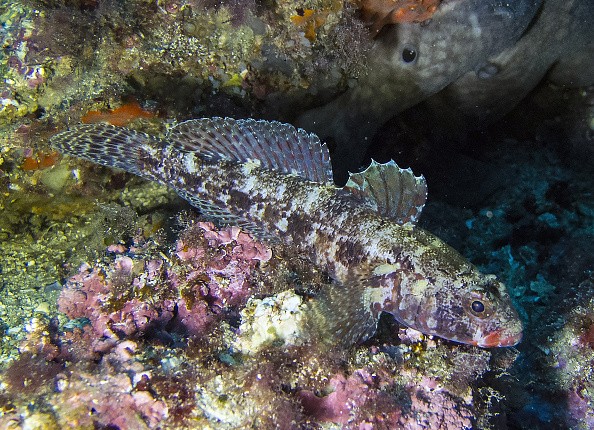Researchers from Japan's Okinawa Institute of Science and Technology Graduate University (OIST) and Western Philippines University (WPU) have discovered two new species of goby fish in Palawan which is a Philippines archipelago and home to more than a dozen species of goby.
The two newly discovered species of goby fish belongs to the genus Rhinogobius and were recently described in the journal Zootaxa.
The new species were given the Latin scientific name Rhinogobius estrellae, named after the waterfall Estrella Falls, in Barangay Estrella Village, where the goby was discovered.
Rhinogobius tandikan is the scientific name given to the Palawan peacock-pheasant, colloquially known as "Tandikan," which inspired the second species' name.

Discovery of Two New Species of Goby Fish
The first author of the study and staff scientist in OIST's Marine Eco-Evo-Devo Unit, Dr. Ken Maeda says the Tandikan goby's spots reminded him of the blue marks on the Tandikan's body.
This collaboration between OIST and WPU has discovered the third and fourth new goby species in Palawan, following Stiphodon palawanensis and Lentipes palawanirufus, which were discovered last year.
The fact that Rhinogobius may be found as far south as Palawan reveals that this goby genus's range is significantly larger than previously thought.
"We were very surprised the first time we saw Rhinogobius estrallae, and then really excited when we found the second species," said Dr. Maeda. "The Rhinogobius habitat is typically located in temperate and sub-tropical regions further north than Palawan, in places like Vietnam, China, Japan, and even the Russian Far East. Finding gobies from this genus in Palawan was very unexpected."
Understanding the Mitochondrial DNA of the New Species
The researchers also examined mitochondrial DNA from the two species and found that they belonged to an ancient branch of the Rhinogobius genus.
In the past, only Rhinogobius similis, a goby with a similar evolutionary line, was known. There are morphological traits that are unique to this lineage that is shared by all three species.
When compared to the widely disseminated Rhinogobius similis, which can be found all the way from Japan to Vietnam, the two newly discovered species seem endemic, which means they can only be found in one place, even on the island of Palawan, according to Phys.org.
For the sake of protecting these two newly discovered species, scientists have urged that extra care be taken to conserve their habitats.

About Goby Fish
The majority of goby fish are found around the coasts of tropical and temperate countries. Many of the fish are found in the oceans, but others live in freshwater and brackish water. Even the American continent has a population of gobies, which can be found in a wide range of locations.
Goby fish are omnivorous carnivores, meaning they'll consume both plants and animals. They feed on fish pellets, artificial food, and live food. Daphnia, live brine shrimp, bloodworms, and Cyclops are some of the most frequent items that they can be fed. Gobies' feeding habits are quite amusing, and they may reject food.
When it comes to raising fish in a home aquarium, gobies are among the most difficult. For these species to be able to effectively reproduce, they typically require certain adjustments to the water parameters.
A tank with lots of caves or hiding spots is ideal if one is trying to breed fish in an aquarium. One goby male fish should be kept with at least three females for the greatest results.
For more news, updates about fishes and similar topics don't forget to follow Nature World News!
© 2025 NatureWorldNews.com All rights reserved. Do not reproduce without permission.





